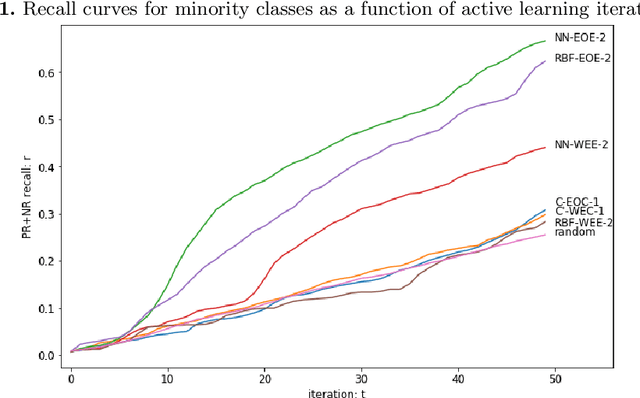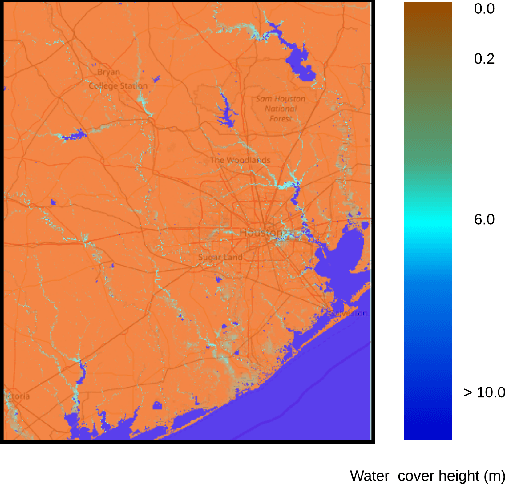Pierrick Bruneau
Astronomical Images Quality Assessment with Automated Machine Learning
Nov 17, 2023Abstract:Electronically Assisted Astronomy consists in capturing deep sky images with a digital camera coupled to a telescope to display views of celestial objects that would have been invisible through direct observation. This practice generates a large quantity of data, which may then be enhanced with dedicated image editing software after observation sessions. In this study, we show how Image Quality Assessment can be useful for automatically rating astronomical images, and we also develop a dedicated model by using Automated Machine Learning.
Hybrid-Physical Probabilistic Forecasting for a Set of Photovoltaic Systems using Recurrent Neural Networks
Mar 15, 2023Abstract:Accurate intra-day forecasts of the power output by PhotoVoltaic (PV) systems are critical to improve the operation of energy distribution grids. We describe a hybrid-physical model, which aims at improving deterministic intra-day forecasts, issued by a PV performance model fed by Numerical Weather Predictions (NWP), by using them as covariates in the context of an autoregressive recurrent neural model. Our proposal repurposes a neural model initially used in the retail sector, and discloses a novel truncated Gaussian output distribution. We experimentally compare many model variants to alternatives from the literature, and an ablation study shows that the components in the best performing variant work synergistically to reach a skill score of 7.54% with respect to the NWP-driven PV performance model baseline.
Cold Start Active Learning Strategies in the Context of Imbalanced Classification
Jan 25, 2022
Abstract:We present novel active learning strategies dedicated to providing a solution to the cold start stage, i.e. initializing the classification of a large set of data with no attached labels. Moreover, proposed strategies are designed to handle an imbalanced context in which random selection is highly inefficient. Specifically, our active learning iterations address label scarcity and imbalance using element scores, combining information extracted from a clustering structure to a label propagation model. The strategy is illustrated by a case study on annotating Twitter content w.r.t. testimonies of a real flood event. We show that our method effectively copes with class imbalance, by boosting the recall of samples from the minority class.
Computing flood probabilities using Twitter: application to the Houston urban area during Harvey
Dec 07, 2020

Abstract:In this paper, we investigate the conversion of a Twitter corpus into geo-referenced raster cells holding the probability of the associated geographical areas of being flooded. We describe a baseline approach that combines a density ratio function, aggregation using a spatio-temporal Gaussian kernel function, and TFIDF textual features. The features are transformed to probabilities using a logistic regression model. The described method is evaluated on a corpus collected after the floods that followed Hurricane Harvey in the Houston urban area in August-September 2017. The baseline reaches a F1 score of 68%. We highlight research directions likely to improve these initial results.
Data-driven forecasting of solar irradiance
Jan 10, 2018



Abstract:This paper describes a flexible approach to short term prediction of meteorological variables. In particular, we focus on the prediction of the solar irradiance one hour ahead, a task that has high practical value when optimizing solar energy resources. As D\'efi EGC 2018 provides us with time series data for multiple sensors (e.g. solar irradiance, temperature, hygrometry), recorded every minute for two years and 5 geographical sites from La R\'eunion island, we test the value of using recently observed data as input for prediction models, as well as the performance of models across sites. After describing our data cleaning and normalization process, we combine a variable selection step based on AutoRegressive Integrated Moving Average (ARIMA) models, to using general purpose regression techniques such as neural networks and regression trees.
 Add to Chrome
Add to Chrome Add to Firefox
Add to Firefox Add to Edge
Add to Edge